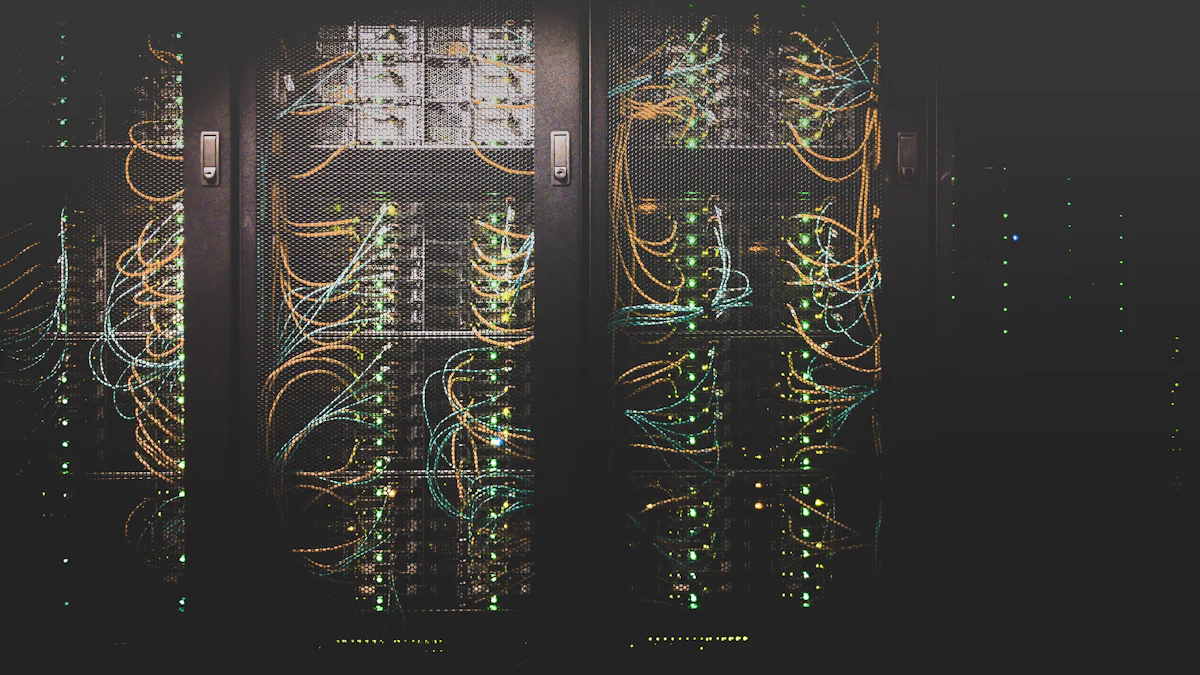Modern businesses rely heavily on the movement of data to drive operations and decision-making. Traditional methods often fall short, with more than 80% of data migration projects failing to meet deadlines or budgets. These methods struggle with inefficiencies and high failure rates. Change Data Capture (CDC) offers a robust solution. CDC Change Data Capture captures real-time changes in data, ensuring efficient and timely updates across systems. This approach supports real-time analytics, fraud protection, and synchronization of geographically distributed systems.
Understanding Change Data Capture (CDC)
What is CDC?
Definition and basic concept
Change Data Capture (CDC) identifies and captures modifications made to a source database. This technique ensures that systems remain synchronized with the most current information. Businesses historically relied on batch data processing for updates. However, this method posed limitations in a rapidly evolving environment. CDC Change Data Capture offers a solution by enabling real-time data integration.
Use Cases and Applications
CDC supports various applications across different industries:
-
Real-time analytics: Businesses can perform instantaneous analysis.
-
Fraud protection: Immediate tracking and identification of data changes enhance security.
-
Geographically distributed systems: Efficient synchronization across multiple locations.
-
Data warehousing: Streamlining ETL processes for better data management.
How CDC Works
Mechanisms of CDC
CDC operates through several mechanisms:
-
Log-based CDC: Monitors database transaction logs to capture changes.
-
Trigger-based CDC: Uses database triggers to detect and record changes.
-
Timestamp-based CDC: Compares timestamps to identify new or modified data.
Types of CDC (Log-based, Trigger-based, etc.)
Different types of CDC Change Data Capture cater to various needs:
-
Log-based CDC: Ideal for minimal performance impact.
-
Trigger-based CDC: Suitable for environments where log access is restricted.
-
Timestamp-based CDC: Useful for simpler implementations without extensive infrastructure.
Key Components of CDC
Source systems
Source systems serve as the origin of data changes. These include databases, data warehouses, and other data repositories. Effective CDC implementation requires robust source systems to ensure accurate data capture.
Target systems
Target systems receive and store the captured data changes. These systems include data lakes, analytics platforms, and other storage solutions. Proper configuration of target systems guarantees seamless data integration.
Middleware and tools
Middleware and tools facilitate the CDC process. These components automate data capture and replication, reducing manual intervention. Popular CDC tools include Debezium, Oracle GoldenGate, TapData and AWS DMS. These tools enhance operational efficiency and cost savings.
Benefits of Using CDC for Data Movement

Real-time Data Integration
Immediate data availability
Change Data Capture (CDC) ensures that data becomes available immediately after a change occurs. Traditional methods often involve batch processing, which delays data updates. CDC eliminates this delay by capturing changes in real time. This immediate availability enables businesses to react swiftly to new information.
Reduced latency
Reduced latency stands as a significant advantage of CDC. Traditional extraction methods often introduce delays due to bulk data movement. CDC focuses on incremental changes, which minimizes the time required to update target systems. This reduction in latency enhances the responsiveness of critical business applications.
Improved Data Accuracy
Minimizing data discrepancies
CDC helps in minimizing data discrepancies between source and target systems. Traditional methods often lead to inconsistencies due to delayed updates. CDC captures every change as it happens, ensuring that both systems remain synchronized. This approach reduces the risk of errors and maintains data integrity.
Ensuring data consistency
Ensuring data consistency becomes easier with CDC. Traditional methods may miss some changes, leading to incomplete data transfers. CDC records every transaction, providing a comprehensive log of all modifications. This thorough tracking ensures that target systems receive accurate and consistent data.
Enhanced Performance
Efficient resource utilization
Efficient resource utilization is another benefit of CDC. Traditional methods often put a heavy load on source systems during data extraction. CDC, particularly log-based CDC, reduces this load by monitoring transaction logs instead of querying the database directly. This approach conserves system resources and maintains performance levels.
Scalability
Scalability becomes achievable with CDC. Traditional methods struggle to handle large volumes of data efficiently. CDC supports incremental loading or real-time streaming of data changes, making it easier to scale operations. Businesses can expand their data management capabilities without compromising performance.
By leveraging these benefits, organizations can enhance their data movement strategies, ensuring real-time integration, improved accuracy, and superior performance.
Practical Applications of CDC
Data Warehousing
Streamlining ETL processes
Change Data Capture (CDC) optimizes Extract, Transform, Load (ETL) processes. Traditional ETL methods often involve bulk data transfers, which can be inefficient and time-consuming. CDC captures incremental changes, reducing the need for full data loads. This approach minimizes system load and accelerates data processing.
Real-time analytics
Real-time analytics becomes feasible with CDC. Businesses can access up-to-date information without waiting for batch processing cycles. Immediate data availability supports timely decision-making. Companies can react swiftly to market changes and customer behaviors.
Business Intelligence
Up-to-date reporting
Up-to-date reporting relies on accurate and current data. CDC ensures that business intelligence systems receive real-time updates. Reports reflect the latest information, enhancing their reliability. Decision-makers can trust the data presented in dashboards and reports.
Enhanced decision-making
Enhanced decision-making stems from reliable data. CDC provides a continuous flow of accurate information. Business leaders can make informed choices based on real-time insights. This capability strengthens strategic planning and operational efficiency.
Cloud Migrations
Seamless data transfer
Seamless data transfer is crucial during cloud migrations. CDC facilitates the movement of data from on-premises systems to cloud environments. Incremental updates ensure that data remains consistent throughout the migration process. Businesses experience minimal disruption and downtime.
Hybrid cloud environments
Hybrid cloud environments benefit from CDC. Organizations often operate across multiple platforms, both on-premises and in the cloud. CDC synchronizes data between these environments, maintaining consistency. This synchronization supports flexible and scalable data management strategies.
By leveraging CDC, organizations can streamline ETL processes, enable real-time analytics, and enhance business intelligence. CDC also ensures seamless data transfer during cloud migrations and supports hybrid cloud environments. These practical applications demonstrate the versatility and effectiveness of CDC in modern data management.
Implementing CDC in Your Organization
Choosing the Right CDC Tool
Evaluation criteria
Selecting an appropriate CDC tool involves several key factors. Organizations must consider compatibility with existing systems. Ease of integration plays a crucial role. Performance and scalability should meet business needs. Cost-effectiveness remains essential for budget management. Support and documentation quality can impact implementation success.
Popular CDC tools
Several CDC tools have gained popularity in the industry. Debezium offers open-source flexibility. Oracle GoldenGate provides robust enterprise features. AWS Database Migration Service (DMS) supports cloud migrations. Talend offers comprehensive data integration capabilities. TapData stands out with its robust performance and user-friendly interface, making it an excellent choice for real-time data integration. Each tool has unique strengths and use cases.
Explore TapData for Your CDC Needs
TapData is an open source, real-time data platform designed to solve the age-old data integration problem with a novel approach:
-
Uses CDC-based, real-time data pipelines instead of batch-based ETL
-
Supports a centralized data hub architecture, in addition to point-to-point
>>>Learn more about TapData and start your free trial today!
Best Practices for CDC Implementation
Planning and strategy
Effective CDC implementation begins with thorough planning. Organizations must define clear objectives. Identifying key data sources and targets ensures alignment. Establishing a detailed timeline helps manage expectations. Allocating resources appropriately can prevent bottlenecks. Regularly reviewing progress maintains project momentum.
Monitoring and maintenance
Ongoing monitoring ensures CDC systems remain efficient. Automated alerts can detect anomalies. Regular audits verify data accuracy. Performance tuning optimizes resource usage. Scheduled maintenance minimizes downtime. Documentation updates keep teams informed.
Overcoming Common Challenges
Data security concerns
Data security presents a significant challenge. Encrypting data in transit protects sensitive information. Access controls restrict unauthorized access. Regular security audits identify vulnerabilities. Compliance with industry standards ensures best practices. Employee training enhances awareness and vigilance.
Handling large volumes of data
Managing large data volumes requires strategic approaches. Incremental loading reduces system strain. Parallel processing enhances throughput. Efficient indexing improves query performance. Data partitioning distributes load evenly. Scalable infrastructure supports growth.
Implementing CDC effectively involves careful tool selection, strategic planning, and proactive monitoring. Addressing security and scalability challenges ensures robust and reliable data movement.
Change Data Capture (CDC) plays a crucial role in modern data movement. CDC ensures real-time integration, accuracy, and performance. Organizations can benefit significantly from adopting CDC for enhanced data management. The future of data movement technologies looks promising with CDC leading the way. Embracing CDC will position businesses to thrive in an increasingly data-driven world.


